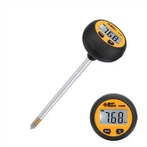The Measurement Method Using a Multimeter for Detecting Fuse Resistors
The fuse resistor is a special component with the dual functions of a resistor and a fuse. In the circuit, it is represented by the letter "RF" or "R".
Selection of Fuse Resistors
When selecting a fuse resistor, its dual performance should be taken into account, and parameters such as resistance value and power should be chosen according to the specific requirements of the circuit. It is necessary to ensure that it can blow quickly under overload conditions and also ensure that it can work stably for a long time under normal conditions. If the resistance value is too large or the power is too large, it cannot play a protective role.
The Measurement Method Using a Multimeter for Detecting Fuse Resistors
In the circuit, after the fuse is open-circuited, a judgment can be made based on experience: If the surface of the fuse resistor is found to be blackened or burned, it can be determined that it is overloaded, and the current passing through it exceeds the rated value by many times. If there are no traces on its surface but it is open-circuited, it indicates that the current flowing through it is just equal to or slightly greater than its rated fusing value. For judging the quality of a fuse resistor with no traces on its surface, you can use the R × 1 range of a multimeter to measure. To ensure accurate measurement, one end of the fuse resistor should be soldered off from the circuit. If the measured resistance value is infinite, it means that this fuse resistor has failed and is open-circuited. If the measured resistance value is far different from the nominal value, it indicates that the resistance has changed, and it is not suitable for further use. In maintenance practice, it has been found that there are also a few cases where the fuse resistor is broken down and short-circuited in the circuit, which should also be noted during detection.
When manufacturing a film-type fuse resistor, usually, the thread pitch of a local part of the film layer is shortened or a low-melting-point glass paste (or a mixture of glass powder and metal oxide, etc.) is coated on the surface of the film layer. When the working current passing through the fuse resistor is too large, the layer of the resistor will quickly blow.
The shells of film-type fuse resistors are made of materials such as ceramics, silicone resins, and flame-retardant paints. The packaging shapes include various forms such as rectangular, cylindrical, and drum-shaped.






